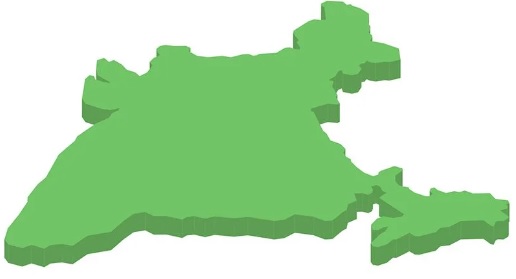When Was the First Time the Name 'India' Was Used for 'Bharat'?
The term "India" has been historically intertwined with the region known as "Bharat" in numerous contexts, encompassing ancient texts, foreign accounts, and colonial history. When Was the First Time the Name 'India' Was Used for 'Bharat'? The evolution of this nomenclature is a fascinating journey through history, reflecting the cultural, geographical, and political changes that have shaped the subcontinent.
Ancient References to Bharat
The name "Bharat" is deeply rooted in Indian tradition and history,
originating from ancient Sanskrit texts. It is derived from the legendary king Bharata, a significant figure in Indian mythology and epic literature. According to Hindu tradition, Bharata was a wise and just ruler, and his name became synonymous with the land he ruled.
The Rigveda, one of the oldest known texts in the world, mentions the term "Bharatavarsha," referring to the geographical expanse that constitutes present-day India. This name has been used in various ancient scriptures, including the Puranas and the Mahabharata, to denote the subcontinent.
The Greek and Persian Influence
The earliest recorded use of a term resembling "India" comes from the ancient Greeks and Persians. The Persians, during the Achaemenid Empire (c. 550–330 BCE), referred to the land beyond the Indus River as "Hindush." The Greeks, influenced by Persian accounts, adopted this term as "Indos" or "Indus." The Greek historian Herodotus (5th century BCE) and other classical writers often mentioned "Indos" when describing the region.
The Greek usage of "Indos" evolved over time into "India." Alexander the Great's campaigns in the 4th century BCE brought greater awareness of the subcontinent to the Mediterranean world. The term "India" became more commonly used in the Hellenistic world following his expeditions.
The Influence of the Indus River
The Indus River, known as "Sindhu" in Sanskrit, played a crucial role in the naming of the region. The river was a significant geographical marker for ancient civilizations and facilitated trade and cultural exchanges. The Persians pronounced "Sindhu" as "Hindu," referring to the people living around the Indus River.
As Persian influence spread, the name "Hindustan" emerged, combining "Hindu" with the Persian suffix "-stan," meaning land. "Hindustan" became a prevalent term to describe the northern part of the subcontinent.
Roman and Medieval European Usage
The Roman Empire continued the Greek tradition of using the term "India." Roman texts and maps from antiquity, such as those by Pliny the Elder and Ptolemy, often referenced "India" as a distant and exotic land known for its wealth and spices.
During the medieval period, European travelers and traders, including Marco Polo and Ibn Battuta, documented their journeys to "India," further solidifying the term in Western lexicon. These accounts contributed to the mystique and allure of India in the European imagination.
The Colonial Period
The Portuguese were among the first European powers to establish direct maritime contact with India in the late 15th century. Vasco da Gama's arrival in Calicut in 1498 marked the beginning of a new era of European exploration and colonization. The Portuguese referred to the subcontinent as "India," a term that was subsequently adopted by other European colonial powers, including the Dutch, French, and British.
The British East India Company, established in the early 17th century, played a significant role in the colonization of India. The British administration officially used the term "India" to refer to the entire subcontinent, encompassing diverse regions, cultures, and languages.
Post-Independence Usage
When India gained independence from British rule in 1947, the country adopted the name "India" in its official English designation. However, the Constitution of India also recognizes "Bharat" as the official name in Hindi. Article 1 of the Indian Constitution states, "India, that is Bharat, shall be a Union of States."
Cultural and National Identity
The dual names "India" and "Bharat" reflect the country's rich cultural and historical heritage. "Bharat" evokes a sense of pride and connection to ancient traditions, while "India" represents the modern, secular nation-state recognized globally.
In contemporary India, both names are used interchangeably. "Bharat" is often preferred in cultural and literary contexts, while "India" is commonly used in official, administrative, and international affairs.
Conclusion
The journey of the names "India" and "Bharat" is a testament to the subcontinent's dynamic history and cultural diversity. From ancient Sanskrit texts to Greek and Persian influences, and from medieval European accounts to colonial nomenclature, the evolution of these names reflects the myriad influences that have shaped the region.
"Bharat" continues to evoke a deep sense of cultural identity and heritage, while "India" stands as a symbol of the nation's modernity and global presence. Together, these names embody the timeless spirit and enduring legacy of one of the world's oldest civilizations.

